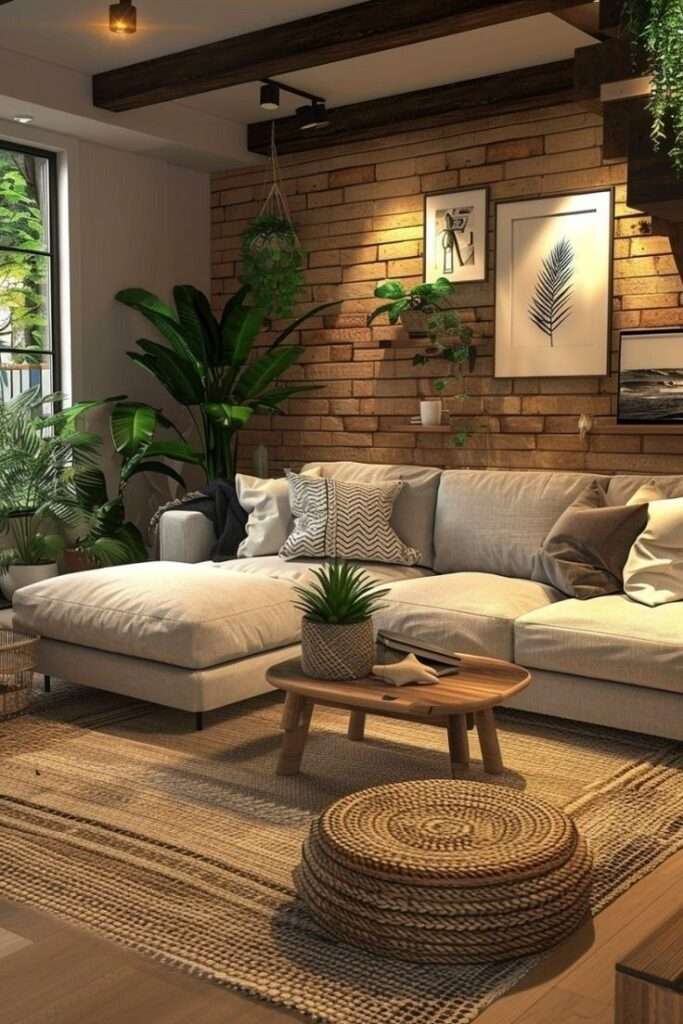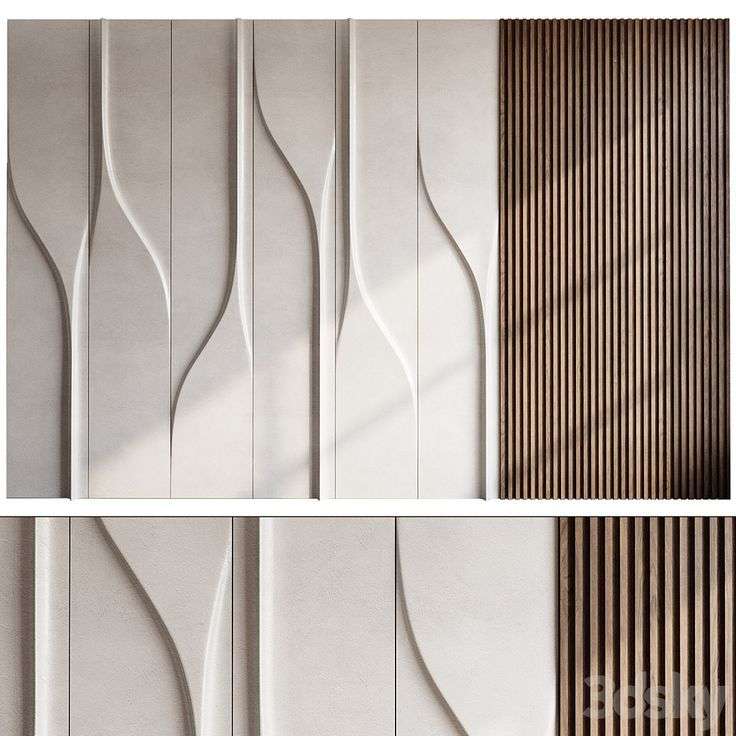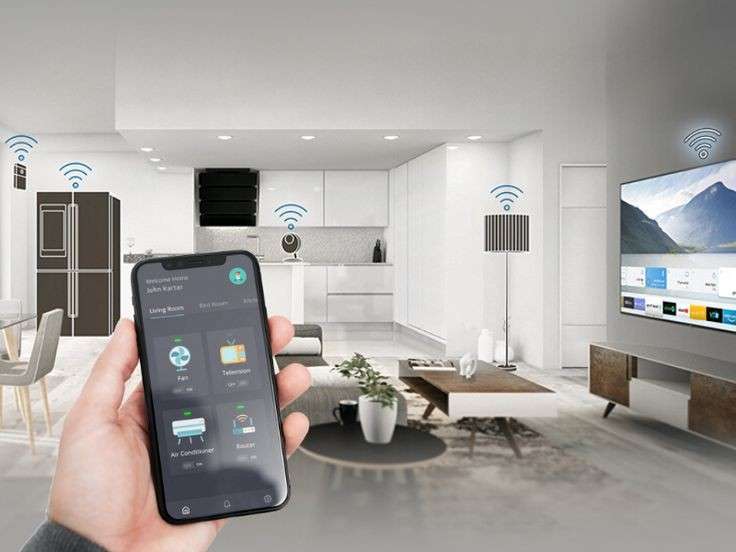In today’s fast-paced world, the importance of creating spaces that nurture both the body and mind has never been greater. As the concept of wellness continues to evolve, more homeowners are turning to wellness design—an approach that focuses on creating environments that support physical health, mental well-being, and emotional balance. Whether it’s reducing stress, improving air quality, or promoting better sleep, wellness design incorporates thoughtful strategies and features to create healthier living spaces.
At Scale & Structure, we understand the importance of designing spaces that not only look beautiful but also enhance overall well-being. In this blog, we’ll explore how to create wellness-focused spaces that promote health, relaxation, and vitality in your home.

What is Wellness Design?
Wellness design is an interior design approach that prioritizes creating spaces that improve the health and well-being of the people who use them. It incorporates principles from biophilic design, environmental psychology, and sustainable design to create environments that support both mental and physical health.
Key components of wellness design include:
- Natural Light: Maximizing exposure to natural sunlight to support circadian rhythms and improve mood.
- Indoor Air Quality: Using materials and systems that improve air quality and reduce toxins.
- Sustainability: Prioritizing eco-friendly materials and energy-efficient systems that promote a healthy environment.
- Mindful Design: Creating spaces that reduce stress and encourage mindfulness and relaxation.
Why Wellness Design Matters
As our understanding of health expands, we’re realizing the significant impact that our surroundings have on our well-being. A thoughtfully designed environment can have a direct effect on our mental and physical health, influencing our mood, stress levels, sleep patterns, and productivity.
The Benefits of Wellness Design:
- Stress Reduction: Calming environments help reduce anxiety and promote relaxation.
- Better Sleep: Proper lighting, noise reduction, and supportive furniture can improve sleep quality.
- Increased Productivity: Well-designed spaces foster focus and energy, increasing efficiency and motivation.
- Improved Health: Healthy materials and air quality improve physical well-being by reducing allergens and toxins.
Key Principles of Wellness Design
Creating a wellness-centered home requires more than just aesthetic choices. It’s about integrating specific design elements that foster physical and emotional health. Here are the key principles of wellness design:
1. Natural Light and Lighting Design
Natural light is one of the most important factors in wellness design. It regulates our circadian rhythms, boosting our mood and energy levels. By maximizing natural light, you create spaces that feel open, airy, and uplifting.
How to Maximize Natural Light:
- Strategic Window Placement: Ensure your space has ample windows that allow natural light to flood the room. Consider large windows, skylights, or even glass doors that open up to outdoor spaces.
- Use of Reflective Surfaces: Incorporate mirrors, light-colored walls, and reflective surfaces to help bounce natural light around the room.
- Layered Lighting: In addition to natural light, use a combination of ambient, task, and accent lighting to create a balanced, versatile lighting plan.
2. Biophilic Design: Connecting with Nature
Biophilic design is all about bringing the outdoors inside. Research shows that exposure to nature can reduce stress, improve mood, and enhance overall well-being. Biophilic design integrates natural elements such as plants, wood, and water features into indoor spaces.
Biophilic Design Ideas:
- Indoor Plants: Incorporate a variety of plants to purify the air and add a calming, natural element to your home. Opt for easy-care plants like succulents, ferns, and snake plants if you’re new to plant care.
- Natural Materials: Use materials like wood, stone, and bamboo in furniture, flooring, and wall treatments to evoke the feeling of being surrounded by nature.
- Water Features: The soothing sound of water can have a calming effect. Consider adding a small indoor fountain or water feature to your space.
3. Air Quality: The Importance of Clean Air
Air quality plays a significant role in both physical and mental health. Poor air quality can lead to headaches, fatigue, and respiratory issues, which is why ensuring your home is well-ventilated and free of pollutants is key to wellness design.
Improving Air Quality in Your Home:
- Natural Ventilation: Open windows regularly to allow fresh air to circulate, especially in rooms like the kitchen and bathroom.
- Air Purifiers: Invest in air purifiers to filter out allergens, dust, and pollutants, particularly if you live in a city or have allergies.
- Non-Toxic Materials: Choose paint, finishes, and furnishings that are free from harmful chemicals like VOCs (volatile organic compounds), which can contribute to poor indoor air quality.
4. Sustainable and Healthy Materials
Sustainability is a key component of wellness design. Using natural, eco-friendly materials in your home not only reduces your carbon footprint but also ensures your living space is free from harmful chemicals and toxins.
Eco-Friendly and Healthy Material Choices:
- Low-VOC Paints: Choose paints and finishes that are free from harmful chemicals to improve indoor air quality.
- Sustainable Furniture: Look for furniture made from renewable or reclaimed materials, such as FSC-certified wood, bamboo, or recycled metal and glass.
- Organic Fabrics: Opt for textiles made from natural fibers such as cotton, linen, or wool, which are better for the environment and your health.
5. Sound Design: Reducing Noise Pollution
Noise pollution can negatively impact your mental well-being and sleep quality. Incorporating soundproofing techniques or creating calming acoustic environments can make a significant difference in your overall comfort and relaxation at home.
Sound Design Tips:
- Soundproofing: Use materials such as thick carpets, drapes, or acoustic panels to reduce unwanted noise, particularly in bedrooms and home offices.
- White Noise: Consider adding a sound machine or a water feature to create a soothing background noise that helps mask other disruptive sounds.
- Soft Furnishings: Soft textiles like upholstered furniture, cushions, and rugs absorb sound and help create a more peaceful environment.
6. Ergonomic Design: Prioritizing Comfort and Movement
Ergonomics is an important aspect of wellness design, particularly in areas where you spend a lot of time, such as your home office or bedroom. Choosing furniture that supports proper posture and promotes movement can improve physical health and comfort.
Ergonomic Tips for Your Home:
- Adjustable Furniture: Invest in adjustable chairs, desks, and beds that allow you to customize your comfort level.
- Standing Desks: For a healthier home office, consider a standing desk or a convertible desk that allows you to alternate between sitting and standing.
- Supportive Seating: Choose chairs and sofas that provide proper lumbar support to reduce the risk of back pain and promote good posture.
Wellness Spaces in Your Home
Wellness design can be integrated into every room in your home. Here are a few ideas for creating wellness-centered spaces in different areas of your house:
1. Bedroom Wellness: Creating a Restful Retreat
- Comfortable Bedding: Invest in high-quality, breathable bedding made from natural fibers like cotton or linen.
- Calming Colors: Use soft, neutral colors like blues, greens, and grays to create a relaxing atmosphere that promotes better sleep.
- Noise and Light Control: Consider blackout curtains and noise-canceling solutions for a more peaceful sleeping environment.
2. Bathroom Wellness: A Spa-Inspired Escape
- Water Features: A rainfall showerhead or a deep soaking tub can provide a luxurious, calming experience.
- Natural Materials: Use stone or wood accents to create a connection to nature and add a sense of tranquility.
- Aromatherapy: Essential oils or candles can add soothing scents that enhance your relaxation experience.
3. Living Room Wellness: A Gathering Place for Relaxation
- Soft Lighting: Use a combination of natural and soft lighting to create a warm, inviting atmosphere.
- Comfortable Seating: Choose sofas and chairs with ergonomic designs that encourage good posture and comfort.
- Personal Touches: Add elements like plants, artwork, and textiles that reflect your personality and enhance the mood of the space.
Why Choose Scale & Structure for Wellness Design?
At Scale & Structure, we believe that your home should be a sanctuary for health and well-being. Our team of experienced designers specializes in creating spaces that not only look stunning but also promote a sense of balance, relaxation, and vitality. Whether you’re looking to redesign your bedroom for better sleep or create a wellness-focused living room, we work with you to integrate wellness principles into every aspect of your home.
Why Work with Scale & Structure:
- Personalized Wellness Solutions: We design spaces tailored to your unique health and wellness needs, incorporating elements that promote physical and mental well-being.
- Expert Guidance: Our team of designers is experienced in creating spaces that balance aesthetics with functionality, ensuring your home is both beautiful and supportive of your health goals.
- Sustainable and Healthy Materials: We prioritize eco-friendly materials and sustainable design practices that align with your wellness values.
Ready to create a home that enhances your health and well-being? Contact Scale & Structure today and let us help you design a space that promotes wellness and vitality.



